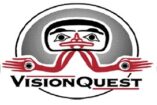Principles
Serve All People
While VisionQuest serves all people who are looking for recovery, we are especially attuned to the needs of the following:
– Individuals entrenched in the justice system
– Low income
– First Nations
The length of our six-month program comes from a neuro-psychological perspective; individuals with addiction have experienced bio-chemical brain changes. They have developed maladaptive coping strategies that have become engrained into their behavioural repertoire. They have internalized a self-image of incredible worthlessness, and many have depleted their formal and informal sources of support.
Given that addiction is a bio (physical), psycho (thoughts and feelings), social (entrenched in and reinforced by relationships and environments), spiritual (loss of purpose and meaning, connection with a higher power and belief system) condition, addressing the challenges that are both cause and effect of addiction is no small task. The benefit of a six-month program is that the client has a significant amount of time to begin to heal their brain, learn new coping strategies and ways of thinking, establish a new “identity” as that of a sober person and connect with others with like-minded recovery goals.
Trauma Informed Program Structure
V.Q.’s program structure is designed to accommodate the needs of all attendees and takes into account the traumas faced by the residents and the significant lack of supports received. The programs are as follows:
– Anger Management
– Life Skills
– Relapse Prevention
– Parenting
– Healthy Relationships
– Forgiveness
– Leadership
– Grades 1-12
– Honoring Traditions, Exploring First Nations Culture
– Trauma Therapy
The goals of VisionQuest Recovery Society are;
– Providing healing for people suffering from substance use disorder
– Reducing recidivism in the criminal justice system
– Ending the cycle of trauma, abuse and poverty
– Reconciliation for First Nations peoples
Reducing Recidivism
Reducing recidivism equates to reduced crime overall in communities. The bulk of community offences occur to feed the addiction. The brain of an individual suffering from SUD is “stuck” in survival mode. Neural pathways have been damaged or altered; the substance becomes something equating food or water, desperately needed for survival. Reforming the pathways to a “normal” state will break down that survival focus, and the individual will be free from the cycle of reoffending to feed the addiction. 55% of residents remain crime free after 3 years.
Reconciliation
35 to 50 percent of VisionQuest’s residents are First Nation at any given time. A significant part of reconciliation for First Nations peoples is healing from the traumas caused by colonialism. VisionQuest offers that opportunity through recovery with a culturally sensitive lens. Trauma informed counselling, healing circles and traditional classes in addition to recovery and life skills programming increases the chances of long term healing and recovery.
Focus on the Justice System
VisionQuest has been in operation for 25 years, with a significant focus on the justice system. We work closely with probation officers, bail support officers, ACT teams, and Crown and defense attorneys. Specifically designed for the most vulnerable in our population, our program treats those who often did not receive the supports necessary to develop effective life skills. Our fees are designed so that all our beds are open for all low-income individuals. Despite the low rates, we have a full complement of staff, including counsellors, facilitators, case managers and knowledgeable administration. We can achieve this through effective partnerships with stakeholders and government agencies as well as through grants and donations.
Close Relationships with Stakeholders
VisionQuest retains close relationships with it’s stakeholders:
• Attorneys
• P.O. and Bail supervisors
• Outreach agencies
• Mental health agencies
• B.C. Housing
• Ministry of Social Development
• Various First Nations and Indigenous services across the country, including BC, Alberta, Saskatchewan and Ontario
